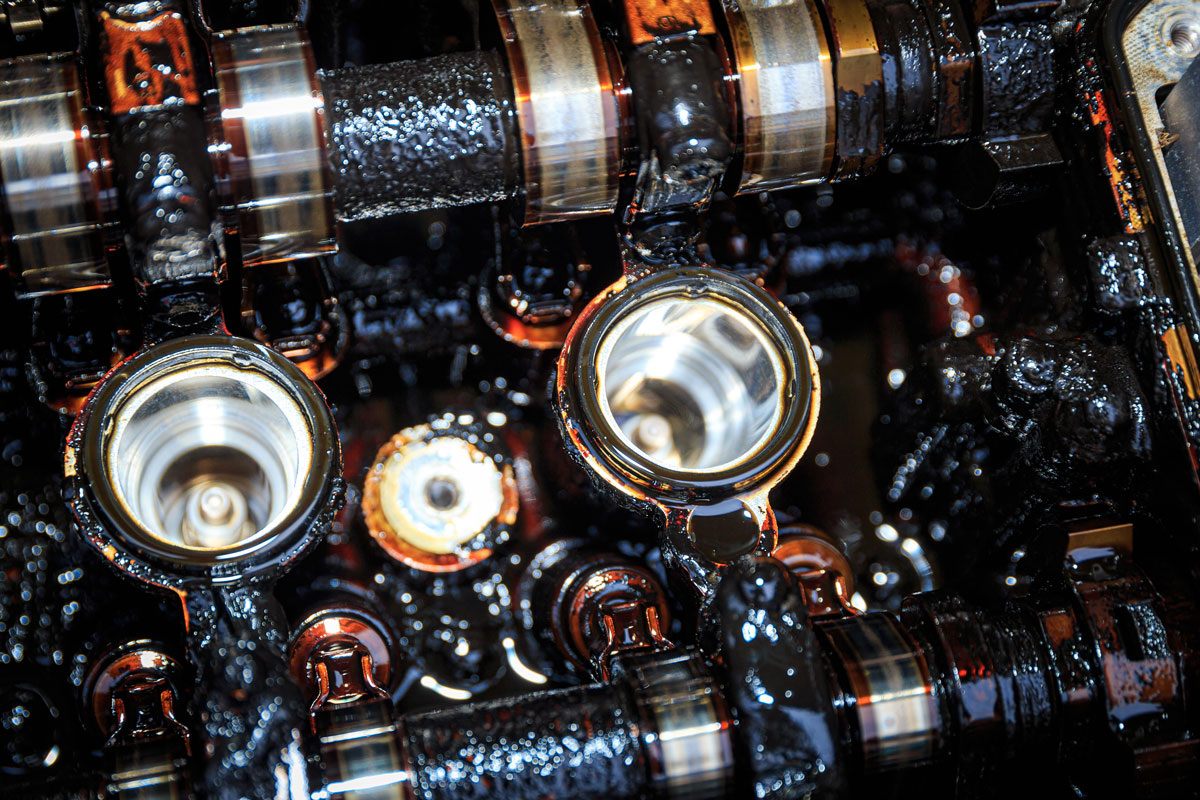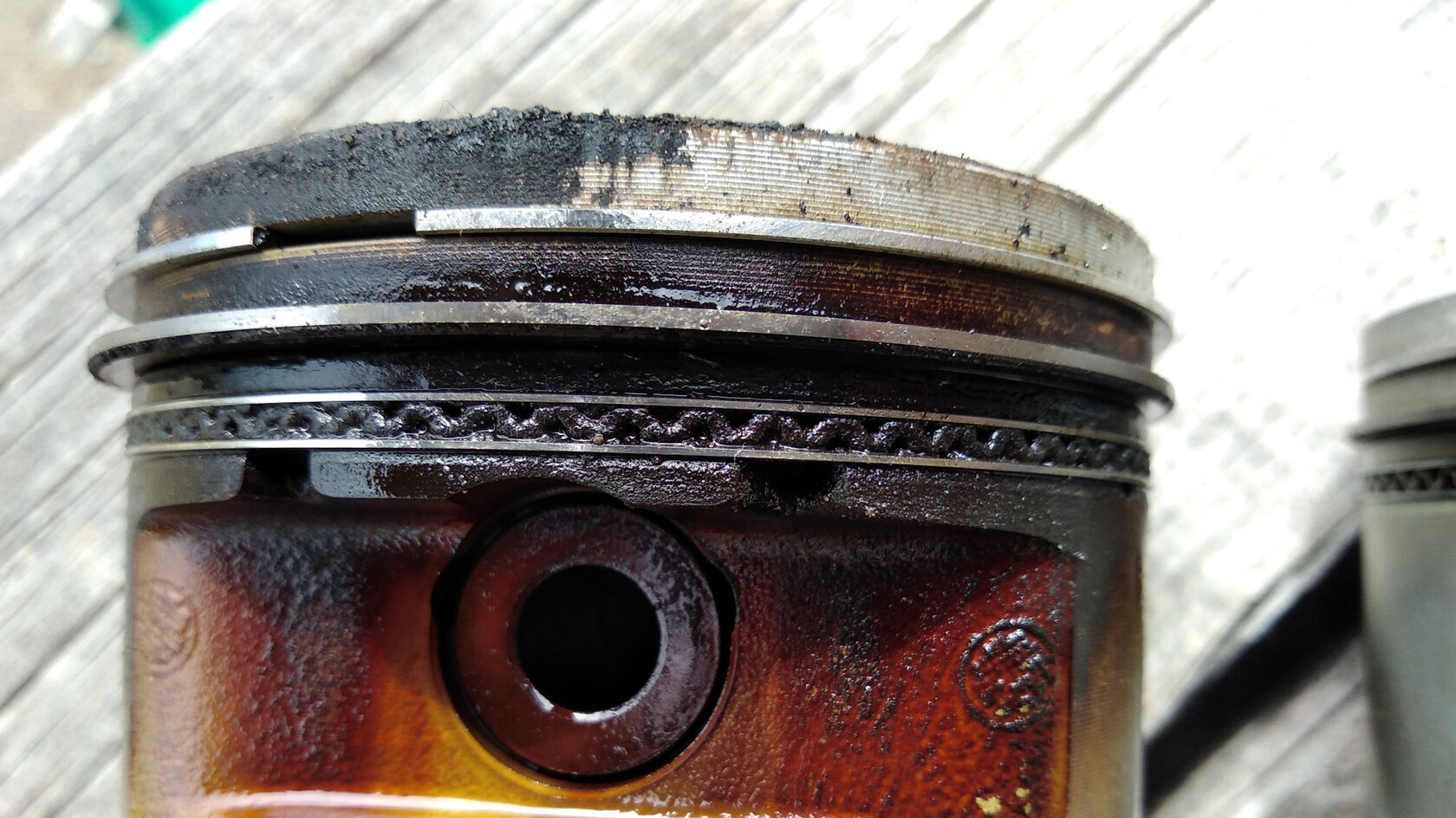1. With any oil, the engine wears out at an average rate of 2-4 microns per 10,000 km.
2. The rate of wear depends on the engine load, engine design features, oil quality and previously accumulated wear and deposits.
Causes of wear
1. Cold engine start. This is not only the first 100 revolutions dry, until the oil warms up and flows through the channels. A more important reason is that all additives in the oil are chemicals. And they begin to work only when the oil operating temperature is not lower than 80C (data from Castrol).
2. Gradual contamination of the engine with hot (carbon deposits) and cold (sludge) deposits. The former cause scoring in the cylinder, and the latter wear out the crankshaft bearing liners (the reason for the drop in oil pressure).
2. The rate of wear depends on the engine load, engine design features, oil quality and previously accumulated wear and deposits.
Causes of wear
1. Cold engine start. This is not only the first 100 revolutions dry, until the oil warms up and flows through the channels. A more important reason is that all additives in the oil are chemicals. And they begin to work only when the oil operating temperature is not lower than 80C (data from Castrol).
2. Gradual contamination of the engine with hot (carbon deposits) and cold (sludge) deposits. The former cause scoring in the cylinder, and the latter wear out the crankshaft bearing liners (the reason for the drop in oil pressure).


What to do when choosing oil
First, look at the oil tolerances in the service book and choose the right viscosity. You need to understand that for the first 100,000 km, pay attention to the warranty requirements for the oil, but with a mileage of 100,000 km and above, both wear and deposits accumulate. The reasons are below. This means that you need to compensate for the increased gaps by reducing the service life of the oil by 15-20% and perhaps choosing a slightly thicker oil, especially if increased oil burnout has appeared. After 150-200 thousand km of mileage, you need to reduce the oil change interval by 10-15%.
Reasons for faster oil aging
Usually, in all cars, 2 types of operating conditions are considered - city or highway. The first type is considered a heavy operating mode and the oil change period is recommended to be reduced by 2 times, and the second is easy. To determine the service life of the oil, focus on engine hours, this is 200 engine hours for modern oils. If the average speed in the city is 30 km/h, then the oil change period is 6000 km, and on the highway 90 km/h, then the change period will be 18000 km or better 15000 km. Since in most cases the owners do not follow this and "over-season" the oils, the additives in the oil wear out prematurely and this means that for part of the oil's operating time the engine is not protected and becomes overgrown with deposits again. When pouring in new oil during a change, the contaminated engine begins to wash with fresh oil, which leads to earlier wear of the additives.
Whatever classic oil you pour in, the result will always be the same, as described above.
This is the reason for the appearance of auxiliary chemicals, such as flushing oils and flushing additives, additional anti-wear and anti-friction additives, etc.
If you maintain constant tightness in the combustion chamber using remetallization with Metalyz, then the wear rate not only decreases, but disappears altogether. In this case, deposits in the lubrication system are reduced to almost zero, allowing the oil to do its job for the entire intended period.
The antifriction preparation BorTec does not completely stop wear, but greatly reduces it, several times, and also practically reduces deposits to a minimum.
First, look at the oil tolerances in the service book and choose the right viscosity. You need to understand that for the first 100,000 km, pay attention to the warranty requirements for the oil, but with a mileage of 100,000 km and above, both wear and deposits accumulate. The reasons are below. This means that you need to compensate for the increased gaps by reducing the service life of the oil by 15-20% and perhaps choosing a slightly thicker oil, especially if increased oil burnout has appeared. After 150-200 thousand km of mileage, you need to reduce the oil change interval by 10-15%.
Reasons for faster oil aging
Usually, in all cars, 2 types of operating conditions are considered - city or highway. The first type is considered a heavy operating mode and the oil change period is recommended to be reduced by 2 times, and the second is easy. To determine the service life of the oil, focus on engine hours, this is 200 engine hours for modern oils. If the average speed in the city is 30 km/h, then the oil change period is 6000 km, and on the highway 90 km/h, then the change period will be 18000 km or better 15000 km. Since in most cases the owners do not follow this and "over-season" the oils, the additives in the oil wear out prematurely and this means that for part of the oil's operating time the engine is not protected and becomes overgrown with deposits again. When pouring in new oil during a change, the contaminated engine begins to wash with fresh oil, which leads to earlier wear of the additives.
Whatever classic oil you pour in, the result will always be the same, as described above.
This is the reason for the appearance of auxiliary chemicals, such as flushing oils and flushing additives, additional anti-wear and anti-friction additives, etc.
If you maintain constant tightness in the combustion chamber using remetallization with Metalyz, then the wear rate not only decreases, but disappears altogether. In this case, deposits in the lubrication system are reduced to almost zero, allowing the oil to do its job for the entire intended period.
The antifriction preparation BorTec does not completely stop wear, but greatly reduces it, several times, and also practically reduces deposits to a minimum.
